All Churned Up – How To Make Your Own Delicious Butter
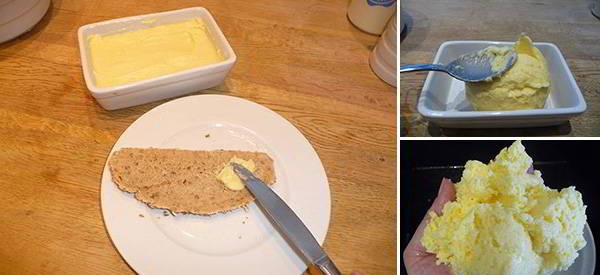
by RHONA REID
If you haven’t yet tried making your own butter, then don’t wait another day. It’s kitchen alchemy at it’s easiest, and great fun to make with the kids.
You can make butter in a food processor or blender, but we’re going to look at making it completely by hand just like the old-timers did. The process is exactly the same, just a little more time-consuming.
Easy Kitchen Alchemy
The basic premise of making butter is to agitate a measure of cream until the butterfat separates from the buttermilk, using a hand-churn, mechanical device or a simple jar.
We’re going to look at the most stripped-back version of butter making and use a lidded jar. Make sure all of your equipment and your hands are spotlessly clean before starting. Also check that your cream is at room temperature as cold cream takes much longer to ‘break.’
You’ll need:
- Fresh or pasteurized cream, at room temperature (work on the basis that one quart (4 cups) of cream will yield roughly a pound of butter).
- Clean water
- Wooden spoon
- Bowl
- Lidded jar (the cream should fill the jar to around halfway as it needs space to move around). Make the butter in batches if necessary.
#Step 1
Pour the cream into the clean jar and replace the lid. Holding tightly, begin to shake the jar up and down, as vigorously as possible.
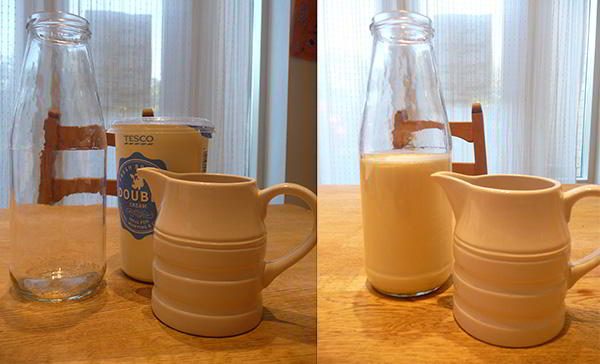
#Step 2
You will need to rest, switch arms and possibly hand the jar to someone else (kids are great with this) to carry on shaking the cream. It should take around 20 minutes for the butter to begin forming.
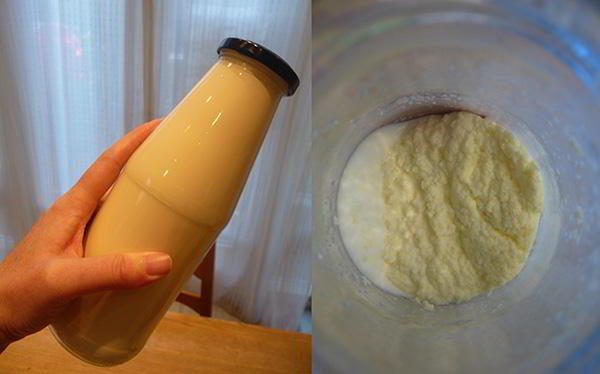
#Step 3
At some point, you will feel and hear a ‘thunk’ as the butter starts to separate. You will see the buttermilk liquid and the solids begin to come apart from each other. From this point, you only need to shake for another minute or so.
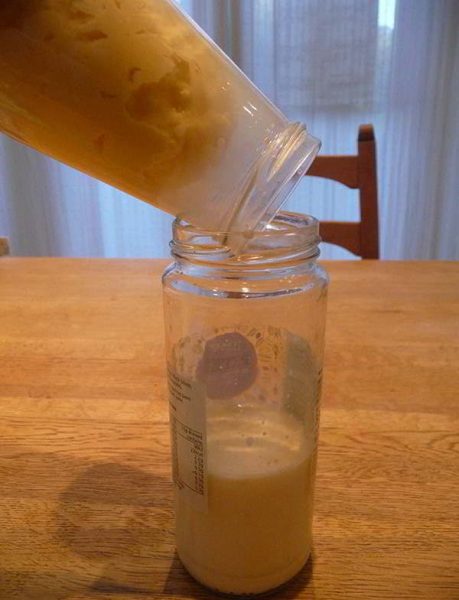
#Step 4
Pour the buttermilk into another jar, replace the lid and put into the refrigerator for future use.
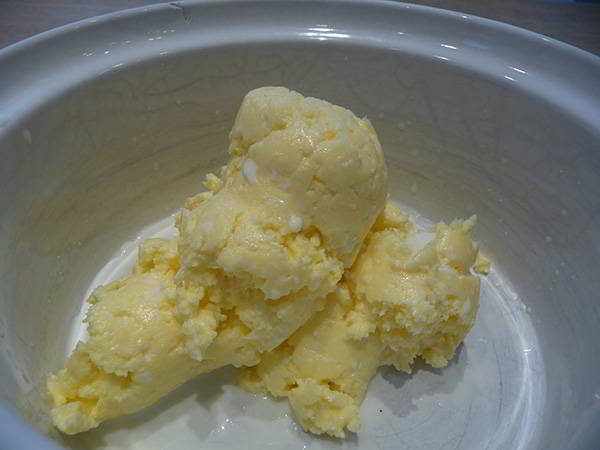
#Step 5.
Transfer the butter into a bowl and bring the solids together with your hands. You now need to remove as much of the buttermilk as possible from the butter. Removing the buttermilk means that your butter will last longer unrefrigerated before turning rancid.
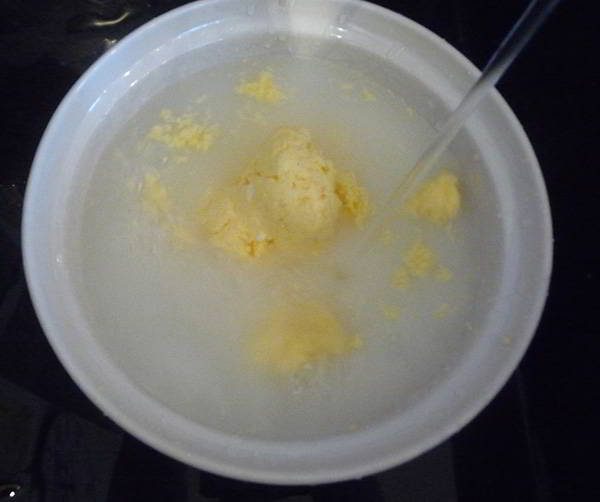
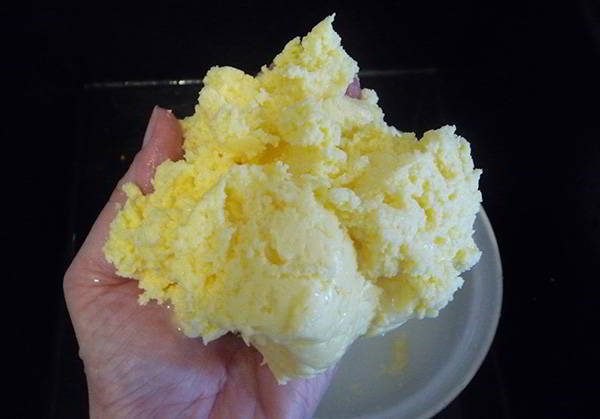
#Step 6
Carefully rinse the butter under a gentle flow of water from the cold tap, or in a few changes of cold water in a bowl. Keep gently squeezing and massaging the butter until the white buttermilk is all rinsed away. If you prefer, you can do this by pressing the butter with a wooden spoon against the side of a bowl.
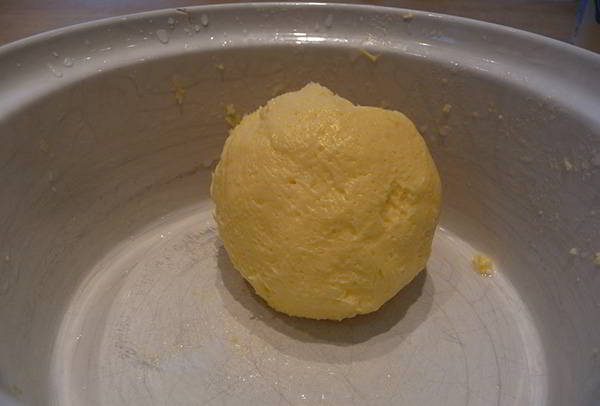
#Step 7
Once the butter is rinsed (it should only take a few minutes), you can dry it off a little with a clean cloth or kitchen towels, then pack it into jars or press into a dish or butter mould.
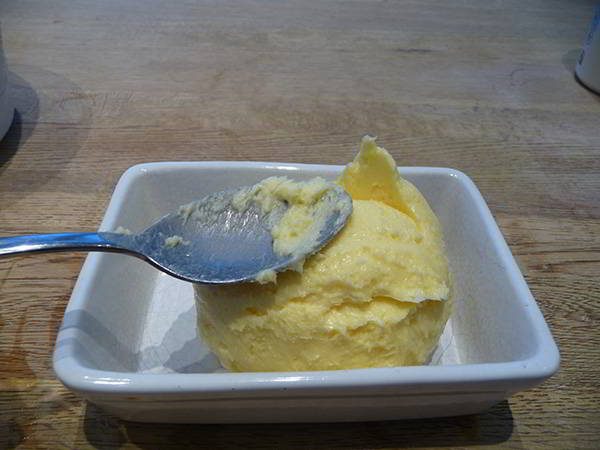
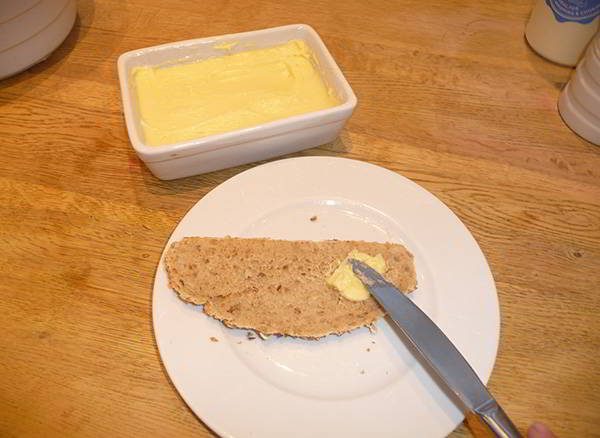
You can also flavor the butter with finely minced garlic, sea salt or dried herbs. Another alternative is to roll a ‘log’ of butter and wrap it in baking parchment and stack the rolls in an airtight container. Butter stored like this should last for two – three weeks in the refrigerator. Keep testing it though; if you didn’t extract all of the buttermilk, it will become rancid sooner than this.
Frozen butter will store safely for up to 6 months.
Irish Bog Butter, Anyone?
Is there any way to store butter without a refrigerator or freezer? Arguably, yes. When a wooden keg filled with 5000-year old, still-preserved ‘bog butter’ was recently dug up from one of Ireland’s ancient peat bogs in County Offaly; it was a marvellous reminder of how food was preserved in those distant times. The cold, airless depths of the peat bogs provided the perfect storage solution for preserving food in wooden containers.
“Bog butter” refers to an ancient waxy substance found buried in peat bogs, particularly in Great Britain and in Ireland. Likely an old method of making and preserving butter, some tested lumps of bog butter were made of dairy products while others were meat-based.
Bog butter is found buried inside some sort of wooden container, such as buckets, kegs, barrels, dishes and butter churns. It is of animal origin, and is also known as butyrellite. In Scotland, the practice of burying bog butter dates back to at least the 2nd or 3rd century.Until recently, Ireland’s oldest recorded find of bog butter was a carved hanging bowl dating back to the 6th or 7th century AD. On 28 April 2011, there were press reports of a find of approximately 50 kilograms (110 lb) of bog butter in Tullamore, County Offaly, thought to date back about five millennia. Found in a carved wooden vessel, it was buried at a depth of 7.5 ft, and still bore a faint smell of dairy.

Irish Bog Butter Dating 3000 BC
Bog butter was produced by interring butter or other fats within a peat bog after encasement within a wooden container, although augmentation of the latter with a deerskin bladder or layers of plant fibres was not unusual. The containers tend to be well-sealed with a convex surface, perhaps to prevent water from pooling and stagnating in direct contact with the packaging and/or contents. (Source)
Butter Bell Storage
A slightly more accessible storage method is to use a ‘butter bell.’ This is a double–walled ceramic pot, into which you pour water to create an airtight seal, with the butter in the centre of the pot. Butter stored correctly in a butter bell can last up to 30 days without being refrigerated.
Homemade butter is absolutely delicious and learning how to produce it is a useful prepping skill to have under your belt, as well as being excellent fun to make!
This article was inspired by ”The Lost Frontier Handbook”.
The Lost Frontier Handbook is a guide created by Suzanne Sherman. It reveals long-lost skills of our ancestors that helped them survive during a crisis, natural disasters, and emergencies. The.jpg) handbook contains high-resolution, detailed diagrams and step-by-step instructions on various survival tips and techniques. Some of the valuable lessons that consumers will discover include medicinal remedies, stockpiling and preserving foods, finding a steady supply of clean water off the grid, and many more. In addition, the content involves step-by-step instructions and detailed images. You can get your copy HERE !
handbook contains high-resolution, detailed diagrams and step-by-step instructions on various survival tips and techniques. Some of the valuable lessons that consumers will discover include medicinal remedies, stockpiling and preserving foods, finding a steady supply of clean water off the grid, and many more. In addition, the content involves step-by-step instructions and detailed images. You can get your copy HERE !
Anyone can join.
Anyone can contribute.
Anyone can become informed about their world.
"United We Stand" Click Here To Create Your Personal Citizen Journalist Account Today, Be Sure To Invite Your Friends.
Humic & Fulvic Liquid Trace Mineral Complex
HerbAnomic’s Humic and Fulvic Liquid Trace Mineral Complex is a revolutionary New Humic and Fulvic Acid Complex designed to support your body at the cellular level. Our product has been thoroughly tested by an ISO/IEC Certified Lab for toxins and Heavy metals as well as for trace mineral content. We KNOW we have NO lead, arsenic, mercury, aluminum etc. in our Formula. This Humic & Fulvic Liquid Trace Mineral complex has high trace levels of naturally occurring Humic and Fulvic Acids as well as high trace levels of Zinc, Iron, Magnesium, Molybdenum, Potassium and more. There is a wide range of up to 70 trace minerals which occur naturally in our Complex at varying levels. We Choose to list the 8 substances which occur in higher trace levels on our supplement panel. We don’t claim a high number of minerals as other Humic and Fulvic Supplements do and leave you to guess which elements you’ll be getting. Order Your Humic Fulvic for Your Family by Clicking on this Link , or the Banner Below.
Our Formula is an exceptional value compared to other Humic Fulvic Minerals because...
It’s OXYGENATED
It Always Tests at 9.5+ pH
Preservative and Chemical Free
Allergen Free
Comes From a Pure, Unpolluted, Organic Source
Is an Excellent Source for Trace Minerals
Is From Whole, Prehisoric Plant Based Origin Material With Ionic Minerals and Constituents
Highly Conductive/Full of Extra Electrons
Is a Full Spectrum Complex
Our Humic and Fulvic Liquid Trace Mineral Complex has Minerals, Amino Acids, Poly Electrolytes, Phytochemicals, Polyphenols, Bioflavonoids and Trace Vitamins included with the Humic and Fulvic Acid. Our Source material is high in these constituents, where other manufacturers use inferior materials.
Try Our Humic and Fulvic Liquid Trace Mineral Complex today. Order Yours Today by Following This Link.






